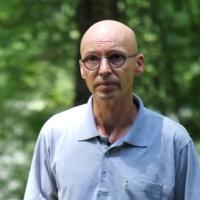
Biodiversity Reading time 2 min
André Evette: protecting goods and people all along the riverbank
André Evette, a researcher and engineer at LESSEM, in Grenoble, works to restore riverbanks and to control alien invasive species. His goal is to develop vegetation engineering techniques in order to minimize civil engineering techniques (cement, walls, and rockfills).
Published on 18 December 2019
